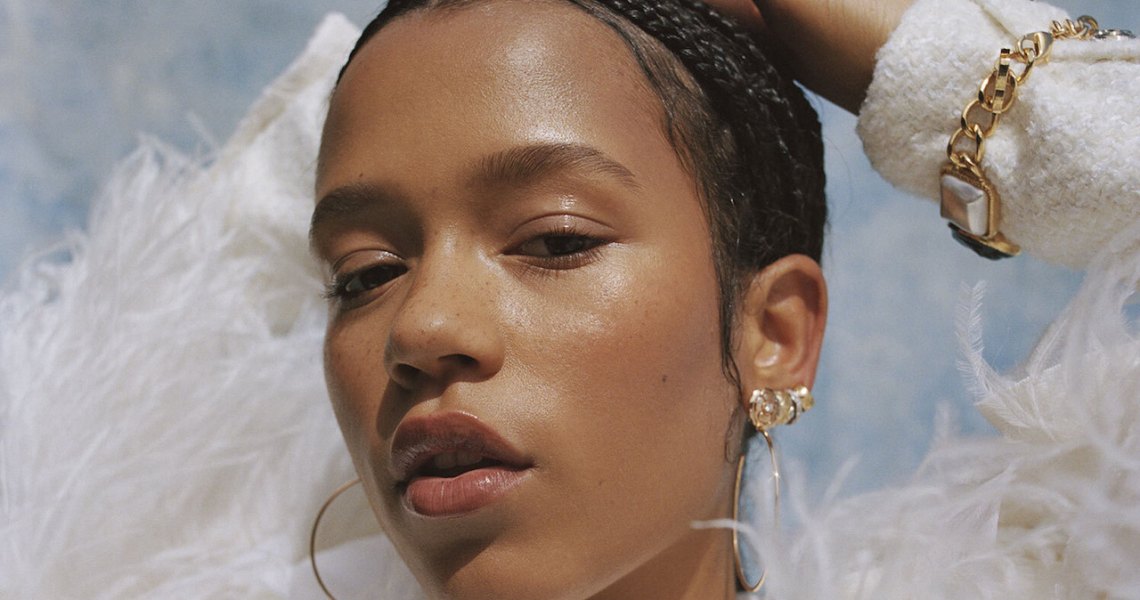As beauty and lifestyle publications struggle with lowered ad spending during the ongoing pandemic, online publication Byrdie is doubling down on a digital model inspired by print publications.
The beauty publication launched its first-ever, magazine-style “digital issue” on Thursday with cover star and actress Taylor Russell; a second “b side” cover features Russell’s hair stylist Johnnie Sapong and makeup artist Kate Lee. The issue’s theme of “changemakers” includes makeup artists, wellness experts and activists such as Meena Harris, a lawyer and author who is the niece of vice presidential candidate Senator Kamala Harris. A collection of 20 articles was published as part of the digital issue.
“What they expect from us, is ‘beauty, beauty, beauty,’ and everything that we do has to feel like it’s going through that lens,” said Leah Wyar, the gm of Byrdie and Brides, of the former’s reader base. But these days, a wide range of topics are “adjacent to what beauty is today,” including mental health, wellness and social issues, she said. “We felt like if we didn’t hit on the things that were happening in the world right now, whether it is Black Lives Matter; the election year — if you ignore that stuff happening, it doesn’t feel like it’s something that’s urgent that [readers] have to read,” she said. The cover featuring Russell was announced September 9 on social media to drive buzz, and digital issues will be published quarterly.
Since its acquisition from Clique Brands by IAC’s Dotdash in January 2019, Byrdie has seen a monthly user increase of 76%, according to Wyar, with 3.6 million users in December 2018 and 6.3 million in July 2020. In the second quarter of this year, Dotdash’s overall display ad revenue experienced an 8% decline, but it saw a 107% increase in performance marketing revenue and an 18% revenue increase overall, according to recent earnings. The company, which owns a portfolio of publications including MyDomaine, Brides, Treehugger and more, declined to share Byrdie’s ad revenue specifically.
According to Digiday research, more than half of publishers missed their Q1 forecasts and 80% lowered their forecast for Q2. Many media companies reported double-digit declines in revenue for Q2.
Melissa Guy, vp of Byrdie and Brides, said that ad performance was driving revenue and contributing to a 90% client retention rate among Byrdie’s top 25 spenders. She said the publication invests heavily in site performance including load speed and user experience, especially on mobile, which is the format used by 78% of its mostly female, millennial and Gen-Z readers.
With over 86% of its traffic arriving through search, according to SimilarWeb, Byrdie focuses heavily on top beauty keywords to drive traffic. According to Wyar, the brand’s skin-care ingredient library is “something that we knew that our readers were really into. They would Google, ‘What is hyaluronic acid?’ or ‘What is Vitamin C?’ Creating this library where they could easily find these in-depth articles about the buzzy ingredients they were learning about on Sephora or wherever they were shopping was important.”
Like other lifestyle publications such as Goop, Byrdie is also getting into the virtual events space with a free online version of its Byrdie Beauty Lab that debuted in 2017. Taking place on September 26, users can sign up for each individual virtual talks, and the first 800 attendees to register received an editorially curated gift box of products (reportedly, these ran out within 24 hours). The event attracted sponsors including StriVectin, Peach & Lily and Omorovicza. It will feature a makeup tutorial, a workout, and talks on men’s beauty and inclusivity.
“It is pretty obvious that six months into our post-Covid[-19] world, we needed a 2.0 of virtual events,” said Wyar. “It’s really hard to sit and watch on Zoom, or whatever platform it is. Our take on this is a much sleeker TV-style production.”




